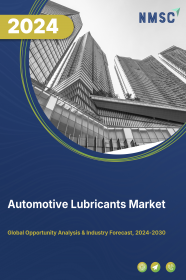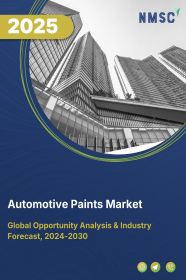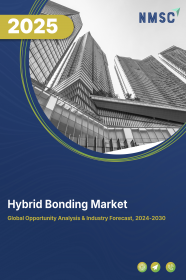
Automotive Lubricants Market By Product Type (Engine Oil, Transmission Fluids, Brake Fluids, Gear Oil, Coolants and Greases), By Base Oil (Mineral Oil, Synthetic Oil, Semi-Synthetic Oil and Bio-Based Oil), By Vehicle Type (Passenger Cars, Light Commercial Vehicles (LCVs), Heavy Commercial Vehicles (HCVs), and Two-Wheelers) and By End-User (Personal Vehicles, Commercial Vehicles and Industrial Vehicles) - Global Opportunity Analysis and Industry Forecast, 2025 – 2030
Industry: Materials and Chemical | Publish Date: 18-Nov-2024 | No of Pages: 487 | No. of Tables: 316 | No. of Figures: 286 | Format: PDF | Report Code : MC300
US Tariff Impact on Automotive Lubricants Market
Trump Tariffs Are Reshaping Global Business
Market Definition
The global Automotive Lubricants Market size valued to USD 79.53 billion in 2024, is predicted to garner USD 103.35 billion by 2030, with a CAGR of 4.5% from 2025-2030.
Automotive lubricants are substrates introduced to reduce friction between two surfaces in mutual contact, hence ensuring smooth functioning and high performance of vehicles. Theses lubricants enhance the engine efficiency and prolongs the lifespan of vehicles by reducing wear and tear of the automotive parts. Automotive lubricants circulate the access heat generated during engine operations by absorbing and transmitting it to the cooler, hence controlling the vehicle temperature.
Market Dynamics and Trends
The automotive lubricants market is gaining momentum over the period owing to the fact that these lubricants amplify the performance of vehicles as well as intensifies its average age by reducing friction rates, lowering fuel consumptions and consequently boosting-up the efficiency of automotive engines.
Besides, market dynamics like increased inclination towards efficient transport, growing demand for commercial utility vehicles and passenger cars as well as the trend of possessing personal automotive transports especially in premium vehicles segment, imposes the need to cater the demand-supply gap for automotive lubricants, hence supplementing the growth of the global market, throughout the forecast period.
However, stringent environmental emission standards, and increased inclination towards electronic vehicle and higher risks of environmental hazard linked with the use of mineral oil lubricants are expected to impede the automotive lubricants market growth during the forecast period.
Moreover, inclination towards highly-efficient-low-emission production processes and innovative product launches by market players tend to increase the competitive nature of the market; these factors are paving the way for lucrative opportunities in the global market.
Market Segmentations and Scope of the Study
The global automotive lubricants market share analysis is based on base oil, vehicle type, application, and geography.
Based on base oil, the market is segmented into Mineral Oil Lubricants, Synthetic Lubricants, Semisynthetic Lubricants, and Bio-Based Lubricants. Based on application the market is fragmented into Engine Oil, Gear & Brake Oil, Transmission Fluids, Greases, and Others. Based on vehicle type, the market is divided into Passenger Cars, Light Commercial Vehicles (LCV), Heavy Commercial Vehicles (HCV), and Others (Motorbikes). Geographic breakdown and analysis of each of the previously mentioned segments include regions comprising North America, Europe, Asia-Pacific, and RoW.
Geographical Analysis
North America region is expected to grow at a considerable rate, accounting a notable amount market share in the global automotive lubricants market. This is due to the strict government policies on emission standards and higher inclination towards the use of electric vehicles.
Europe is expected to demonstrate a significant growth rate owing to higher demand and production of synthetic and semi-synthetic oils in this region.
Asia Pacific is expected to dominate the global market, holing the highest market shares. This is attributable to factors such as growing economy, increase in disposable income, rapid urbanization, proliferating transportation industry, presence of key lubricant manufacturers in this region, higher population, and consequently escalating demand of owning a vehicle among purchasers.
Competitive Landscape
The automotive lubricants industry, which is highly competitive, consists of various market players. Some of the major market players include ExxonMobil Corporation, Castrol Limited, Shell plc, Repsol, Chevron Corporation, BP p.l.c., Fuchs SE, Valvoline Inc., Motul, Phillips 66 Company And others.
The prominent players have adopted product launches and collaborations as their key strategies to gain substantial share in the global market.
For instance, in December 2019, Chevron Corporation, announced its conditional Share Sale Agreement with Puma Energy Asia Pacific B.V. to acquire all shares and equity interests of Puma Energy (Australia) Holdings Pty Ltd for AU$425 million. This acquirement powers Chevron with a stable market for production volumes from Puma’s refining joint ventures in Asia and creating a foundation for sustainable earnings growth. Besides, it shall build on Chevron’s strong history of partnership in Australia and their global experience in fuels as well as convenience marketing and supply.
Furthermore, in January 2020, Total and Apache made an oil discovery with the Maka Central no.1 well on Block-58 offshore Suriname, on trend with the prolific discoveries in the adjacent Stabroek block in Guyana.
Key Benefits
-
The automotive lubricants market report provides a quantitative analysis of the current market and estimations through 2020-2030 that assists in identifying the prevailing market opportunities to capitalize on.
-
The study comprises a deep dive analysis of the automotive lubricants market trend including current and future trends for depicting the prevalent investment pockets in the market.
-
The report provides detailed information related to key drivers, restraints, opportunities and their impact on the global market.
-
The report incorporates a competitive analysis of the market players along with their market share in the global market.
-
The study elaborates SWOT analysis and Porters Five Forces model for the market.
-
Value chain analysis in the automotive lubricants market study provides a clear picture of the stakeholders’ roles.
Automotive Lubricants Market Key Segments
By Product Type
-
Engine Oil
-
Transmission Fluids
-
Brake Fluids
-
Gear Oil
-
Coolants
-
Greases
By Base Oil
-
Mineral Oil
-
Synthetic Oil
-
Semi-Synthetic Oil
-
Bio-Based Oil
By Vehicle Type
-
Passenger Cars
-
Light Commercial Vehicles (LCV)
-
Heavy Commercial Vehicles (HCV)
-
Two-Wheelers
By End-User
-
Personal Vehicles
-
Commercial Vehicles
-
Industrial Vehicles
By Geography
-
North America
-
U.S.
-
Canada
-
Mexico
-
-
Europe
-
UK
-
Germany
-
France
-
Spain
-
Italy
-
Rest of Europe
-
-
Asia-Pacific
-
China
-
India
-
Japan
-
Korea
-
Australia
-
Rest of Asia-Pacific
-
-
RoW
-
Brazil
-
KSA
-
South Africa
-
Remaining Countries
-
Report Scope and Segmentation
|
Parameters |
Details |
|
Analysis Period |
2014–2030 |
|
Base Year Considered |
2020 |
|
Forecast Period |
2025–2030 |
|
Market Size Estimation |
Billion (USD) |
|
Market Segmentation |
By Base Oil (Mineral Oil Lubricants, Synthetic Lubricants, Semi-Synthetic Lubricants, Bio-Based Lubricants) By Application (Engine Oil, Gear And Brake Oil, Transmission Fluids, Greases, Other Application) By Vehicle Type (Passenger Cars, Light Commercial Vehicles, Heavy Commercial Vehicles, Others (Motorbikes, Three Wheelers, etc.) |
|
Geographical Segmentation |
North America (U.S., Canada, Mexico) Europe (UK, Germany, France, Italy, Spain, Rest of Europe), Asia-Pacific (China, Japan, Australia, India, Korea, Rest of APAC), Rest of the World (Brazil, KSA, South Africa, Remaining Countries) |
|
Companies Profiled |
ExxonMobil Corporation, Castrol Limited, Shell plc, Repsol, Chevron Corporation, BP p.l.c., Fuchs SE, Valvoline Inc., Motul, Phillips 66 Company |
KEY PLAYERS:
-
ExxonMobil Corporation
-
Castrol Limited
-
Shell plc
-
Repsol
-
Chevron Corporation
-
BP p.l.c.
-
Fuchs SE
-
Valvoline Inc.
-
Motul
-
Phillips 66 Company

















 Speak to Our Analyst
Speak to Our Analyst

















